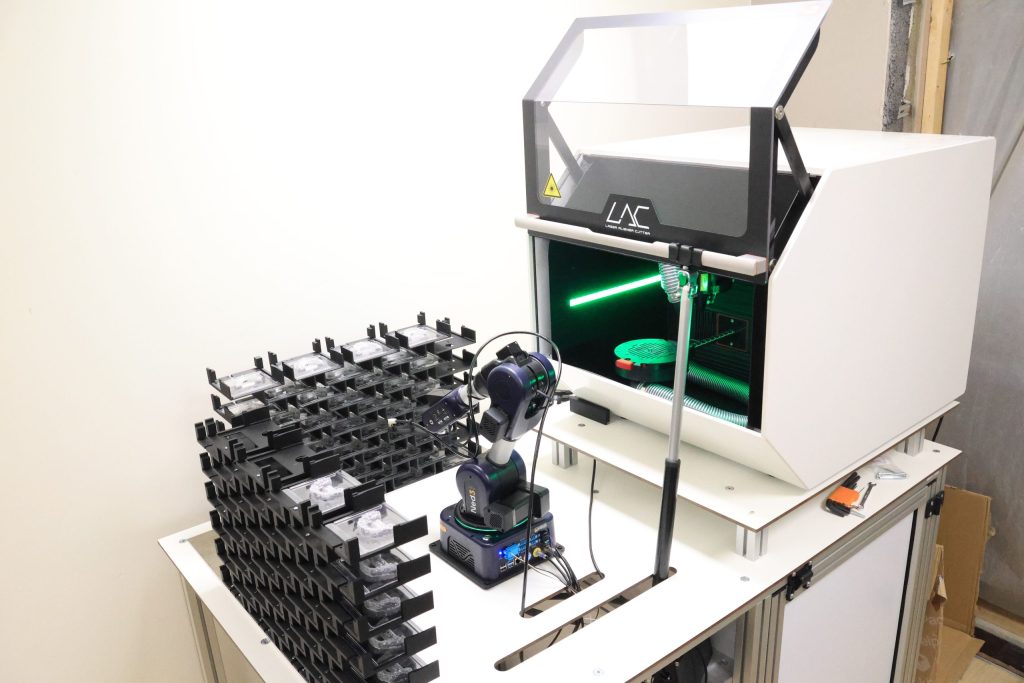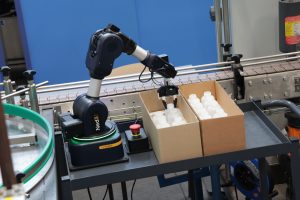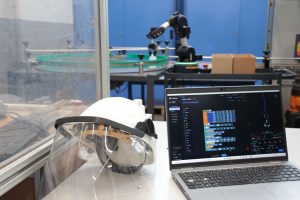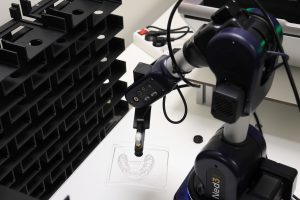Integrating a collaborative robot into a business, from prototype to production, requires a structured approach. This process enables efficient automation of various tasks such as handling or palletizing.
According to the International Federation of Robotics (IFR), the global market for collaborative robots (cobots) is expected to grow by an average of 20 to 30% per year until 2027. This trend reveals how essential cobots have become for manufacturers seeking to optimize their production processes while maintaining operational flexibility. However, effectively integrating these robots, from prototype to production, involves following a structured approach, including needs analysis, technological choice, and rigorous integration to ensure long-term performance, safety, and profitability.
Robotic solutions: more than just a simple articulated arm
Modern automation offers a wide range of solutions, far beyond the classic image of an articulated machine tool or collaborative robot. Incorporating these complex systems is crucial for automation and efficiency in the sector. Many integrators in France develop these solutions for companies, providing services and expertise to optimize manufacturing and employment.
Types of robotic solutions and their applications
Niryo offers several types of robotic solutions, each designed to meet specific industrial automation needs. These technologies improve productivity, precision, and process safety while offering flexibility adapted to business evolution.
- Articulated robots: including, for example, the Ned3 Pro robot, designed to replicate human arm movements through rotary joints. Equipped with six axes, these robots are particularly suited for tasks such as assembly, welding, or painting.
- Automated guided vehicles (AGVs): these are mobile robots that follow predefined paths using sensors or magnetic strips. They are mainly used for material transport within facilities.
- Autonomous mobile robots (AMRs): Unlike AGVs, AMRs can navigate autonomously in dynamic environments using sensors and cameras. They are ideal for applications such as material transport, loading and unloading items, or towing carts.
- Cartesian robots: They move along three orthogonal axes (X, Y, and Z). They are commonly used in applications such as CNC machining, 3D printing, or material handling.
- Collaborative robots (Cobots): Equipped with sensors and safety devices, they can detect human presence and adjust their movements accordingly to avoid collisions. This safe interaction allows cobots to be integrated into shared work environments, thus improving productivity without compromising safety.
Niryo’s robotic solutions find varied applications in industry: assembly lines (assembly, screwing, or welding), material handling, quality control, and palletizing.
Key steps in integrating a collaborative robot
Integrating a collaborative robot (cobot) in a company is a project that follows a structured process to ensure success, often facilitated by an integration service. This reassures manufacturers and teams about implementing this robotics solution that transforms work and production.
Needs analysis and feasibility
Such a project begins with the precise identification of tasks to automate, aiming to measure expected benefits (gains, costs). The study analyzes the working environment and technical and economic feasibility for manufacturers.
Solution design
Next comes the solution design. Choosing the appropriate robot and necessary equipment such as tools (grippers) and vision systems. Designing the cell layout and initial programming development.
Integration and programming
This key phase involves the physical integration of the robot and peripheral machines. Wiring and programming of axes and robotic arms. Unit testing of system components.
Testing, validation, and production launch
Thorough testing confirms the device’s operation in real conditions. Verification of capabilities, safety, and value. Adjustments, operator training, and gradual deployment of automation.
Continuous monitoring and optimization
Finally, preventive maintenance is essential. Managing production data allows analyzing processes and identifying improvement areas for this evolving project. It is an ongoing service ensuring the sustainable optimization of the solution.
Concrete benefits of industrial robotization
Industrial robotics provides concrete solutions to companies, ensuring a significant return on investment. Automating production processes with robots transforms modern industry, offering multiple benefits.
Improved productivity and efficiency
Automated machines and other devices operate continuously, reducing operation execution times. This uninterrupted operation, driven by efficient systems, optimizes device and resource use, increasing overall manufacturing efficiency.
Increased quality and precision
The perfect repeatability of robots ensures consistent quality of manufactured products and parts. This minimizes errors and waste, improving control and accurate measurement. Artificial vision, coupled with robotic arms, enables enhanced traceability, a major asset for the company.
Improved working conditions and safety
Robotics handles arduous, repetitive, or dangerous work, thus reducing accident and musculoskeletal disorder risks in the production environment. This automation enhances safety and allows operators to focus on higher value-added tasks, valuing their expertise. Handling or palletizing is often automated, freeing up human labor.
Production flexibility and adaptability
Manufacturers face challenges where mechanization provides solutions. An automaton or manufacturing devices and their implementation ensure labor protection.
Field experience: case studies and testimonials
The French factory demonstrates mechanization efficiency with concrete solutions for manufacturers. These projects show how automated systems and devices optimize manufacturing and employment.
Practical case 1: Robotizing an assembly task
Faced with repetitive and time-consuming manufacturing activity, a company implemented an automation solution with a mechanical appendage automaton. The project achieved a significant productivity gain (+25%) and a consistent improvement in the quality of assembled parts, reducing scrap.
Practical case 2: Logistics optimization via mobile robots
To streamline internal flows, a company integrated mobile robots for handling. This solution optimized stock management and product transport, improving overall efficiency and safety in the work environment.

















